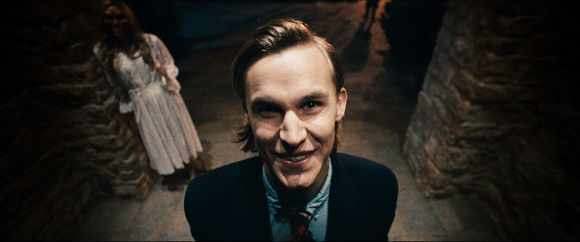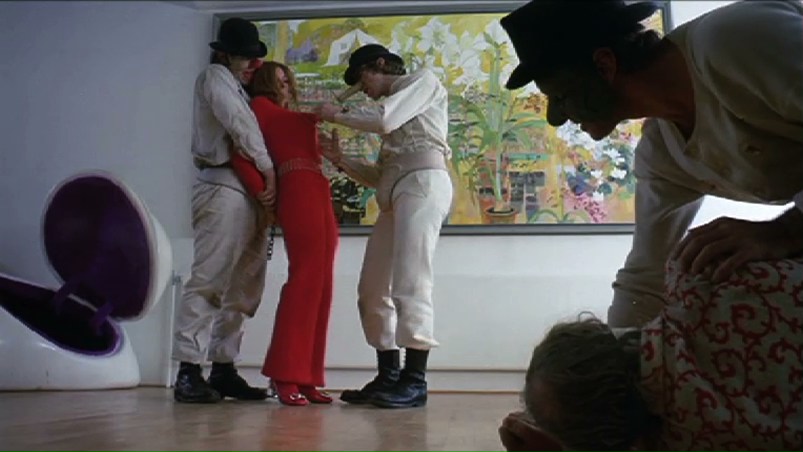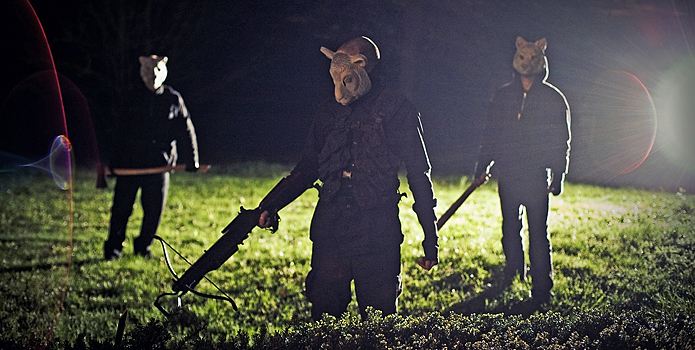The thought of violent, psychotic strangers instilling terror at the place we’re meant to feel completely safe is as unsettling a prospect as most could imagine. This specific sub-genre of horror is made all the more searing as in the back of most people’s minds we know it to be a possibility. When contrasting the likelihood of an eight-foot-tall hillbilly in a hockey mask posing a threat to that of an off-kilter burglar holding a gun on you and your family, there is a clear primal victor. There is no comparison when it comes to real life fear, and consequently that is the life-blood of the home invasion thriller.
This weekend The Purge from James DeMonaco takes the well-worn trope of a family battling for survival against masked assailants and transports it to a dystopian (or for some perhaps utopian) future where citizens of the U.S. are allowed 12 hours a year to perpetrate any crime they wish, free of any ramifications. As early as the 1940’s filmmakers have clued in to the visceral potential held by this setup but now with 70 years of wear and tear, how much spark is left in this approach to horror? So we pose the very simple question: where has the home invasion thriller treaded before, what remains potent enough and what themes have yet to be explored?

The earliest films featuring home invasions were mostly that: works of cinema featuring that nightmare but as a means to a greater end. Efforts like
Perhaps the first film (or in this case films) to truly understand how traumatic the whole ordeal could be for those on the other end of the attack (and more so that the act itself could be the thrill) came in 1967. The Oscar-nominated Wait Until Dark with Audrey Hepburn and Alan Arkin and the little seen The Penthouse both featured a group of thugs terrorizing unsuspecting folk in the comfort of their homes. By today’s standards they may seem tame but they set the stage for what would become an unnerving segment of modern horror.
Stanley Kubrick’s A Clockwork Orange is easily the most iconic when it comes to the early days of this particular horror approach, and not only still shocks to this day with its frank depiction of mayhem and rape at the hands of Alex DeLarge but also made Singin’ in the Rain utterly unsettling. From there on out it was up to the iconic collection of Black Christmas, Straw Dogs, Funny Games and Panic Room and a few others to ascend to the gold standard of the genre which eventually gave way to the senseless, more sadistic, torture porn leanings of the most recent entries.

The cleanest example of this new breed (and I do mean clean as in purest, not that this thriller has any sort of saint-like tendencies) would be The Strangers from 2008 which is clearly a direct inspiration for The Purge and upcoming 2013 home invasion entry You’re Next. Both have seemingly unwavering assailants knocking at the door and in all cases these individuals sport some rather terrifying masks.
I’ve already alluded to the change of venue for the former film and the added twist of the government condoned rampage, so those tweaks to the formula at the very least hope to freshen up the recipe. You’re Next, in addition to grabbing some very strong early marks from critics is supposedly a very fun and satirical take on what we’ve come to expect, so it appears we’ve arrived at the change-or-die point for the formula (well at least the change-enough-to-stave-off-certain-death-at-the-box-office juncture).
So with two efforts forthcoming that look to freshen things up, we’re back the initial query as to where we can go now. Like the many iterations of the “cabin in the woods” trope, switching up the setting can do a great deal to at least appear unique, as can coming up with compelling motivations for the attackers as well as competent responses from the victims. 
Likewise really delving into the psychological consequences for both the residents and perpetrators could make for a fascinating dramatic thriller and in doing so could swing focus to the emotional impact and away from the blood and guts that usually saturate films of this ilk. Or what about a home invasion thriller told solely from the perspectives of the intruders and having them contend with Straw Dogs type opposition as they try to complete their task? Think of an R-rated Home Alone told solely from the perspective of the burglars.
Wherever this genre is headed, nifty tweaks will have to be applied but in ways that never forget that the terror most viewers experience is organic, and doesn’t have to be forced in any way. It all just has to be presented competently and with things to say about the nature of fear or though interesting character dynamics, not necessarily through ramped up sadism or limp masking of well worn tropes. This weekend we’ll see in which camp The Purge resides.